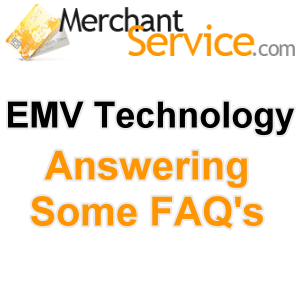
EMV is a standard set of specifications for smart card payments and acceptance devices. The cards consist of built-in microprocessors which enhance the security of merchant credit card processing and other merchant account services.
EMV technology enhances security features of retail credit card processing services to a great level. We answer some common queries about EMV, the technology used in it, and other aspects.
Who introduced EMV?
EMV was introduced jointly by the card associations, namely, EuroPay, MasterCard and Visa. This was done for the standardization of credit card processing technologies across the globe.
What kind of technology does EMV cards use?
The EMV cards have an electronic chip built inside them. This technology replaces the conventional magnetic stripes used with credit card processing. EMV uses advanced end to end cryptography and digitally-signed payment data which makes the transactions extremely secure.
What prompted the introduction of EMV technology?
With the increase of fraud in retail credit card processing and an equally scaling threat of phishing and hacking, it became necessary to introduce advanced technology into the equation. Though, the main reasons are the increase of physical fraud with magnetic stripe cards and providing the cardholder with convenient credit card processing methods abroad.
What are the advantages of EMV for the business community?
Reducing fraud and ensuring secure transactions for your customer would encourage them to make purchases from you. The fraud protection is not just advantageous to the cardholder, but also the merchant.
Merchant account providers can significantly boost their productivity as a result of replacing signed paper slips with electronic records. The advanced technology also offers the merchant fewer charge backs, lowered security auditing expenses and much more.
Where is EMV used?
It has been more than a decade since EMV was introduced. The technology is used in most places worldwide including but not limited to Canada, Europe, Latin America and Asia.
How does EMV ensure credit and debit card transaction security?
EMV addresses Five major areas in credit card processing:
- Protection against counterfeit cards: Cards are authenticated during the payment transaction. The cards are validated online using a cryptogram. Offline authentication is done using authentication technologies such as Static Data Authentication (SDA), Dynamic Data Authentication (DDA) or Combined DDA with application cryptogram generation (CDA).
- Cardholder Authentication and Verification: EMV technology does the authentication and verification of the cardholders, thereby providing protection against lost and stolen cards. Validation is done to ensure the individual wanting to make the transaction is the person to whom the card belongs.
- Transaction authorization: EMV provides authorization of credit card processing too. The process can be done via online and offline means.
- Online transactions: The online transactions are done using emv cards. The transaction information and a transaction-specific cryptogram are sent to the issuer. The issuer either authorizes or declines the transaction.
- Offline Transactions: In the offline method, the card and terminal communicate and use issuer-defined risk parameters that are set in the card to determine whether the transaction can be authorized.

